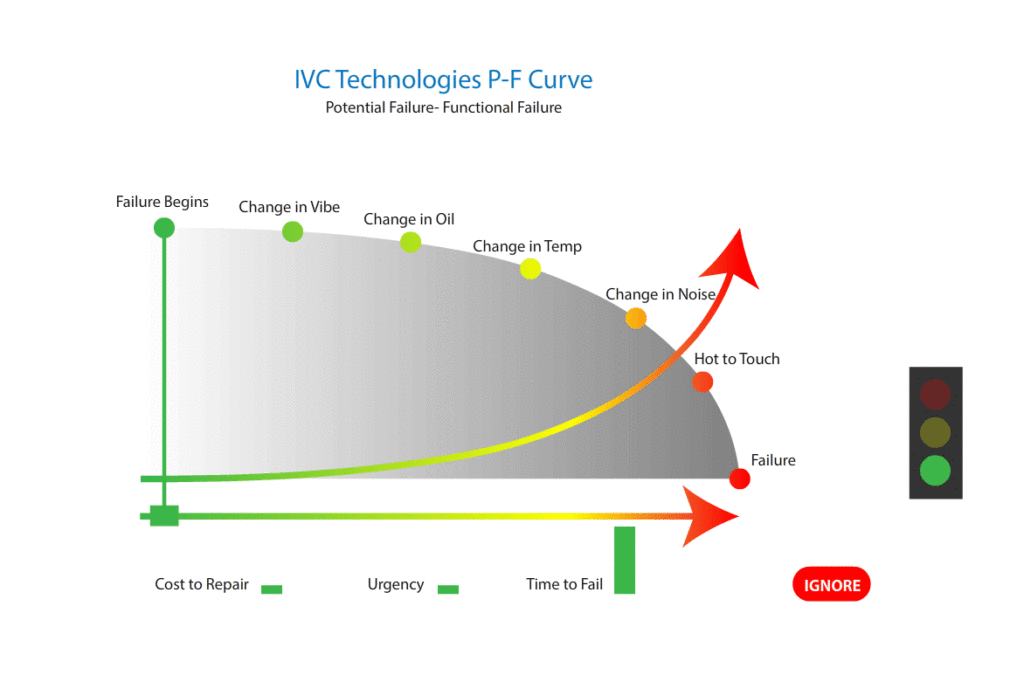 Why Regular Reliability Centered Maintenance Auditing Better Insures a Positive Return on Investment
Why Regular Reliability Centered Maintenance Auditing Better Insures a Positive Return on Investment
As advancements in technologies continue to change the face of the industry and its processes, the challenges faced by manufacturing companies in their pursuit of reliability remain the same: decreasing maintenance costs and downtime while simultaneously increasing production of high-quality goods, throughput and profits. Reliability programs designed to improve machine reliability play a critical role in achieving these goals.
When designed and implemented correctly, reliability programs provide a comprehensive, data-driven solution to improving machine reliability that is tailored to meet the specific needs and budgets of the manufacturing company for which it was created. These programs encompass not only the specific machines to be monitored, but also the people, processes, and technologies involved in the implementation and ongoing management of the program.
A critical but often overlooked component of a strong reliability program is conducting regular audits. Maintenance operations change over time due to equipment being added and/or replaced, changes to maintenance personnel, and changes to suppliers, etc. Regular auditing of a reliability program sheds light on any new inefficiencies that have emerged, as well as any new opportunities for improvements, enabling a company to reduce maintenance costs, and maintain a positive return on their investment.
This paper will discuss the key components of a “world-class” reliability program that will include technologies utilized (i.e. the fault types they detect, their PF Curve impact, the pitfalls associated with their incorrect application and/or usage), appropriate management systems to have in place, and examples from previous system audits showing how the audit process unveiled hidden deficiencies within the plant’s reliability program.
What is Reliability Centered Maintenance?
Machines are not built to run forever. In fact, as sad a reality as it may be, just like a human technically begins the process of dying from the moment they are born, a machine begins its journey toward failure from the moment it is installed. And just as there are things a person can do to prolong the length and quality of their life, there are things that can be done to extend the life and improve the reliability of industrial machines.
Machine maintenance has been and will always be, a key component to any industrial operation. However, progressive manufacturing companies of today are realizing the importance of viewing maintenance as a significant part of a greater, more comprehensive reliability centered approach to maintaining the health of their machine assets while increasing production and decreasing maintenance costs.
Contrary to what the name may imply, reliability centered maintenance (RCM) is not an actual maintenance program in and of itself. Rather, it refers to a process for carefully analyzing machine assets on an individual basis to identify potential problems and the appropriate maintenance method to apply to ensure those assets continue to produce at maximum capacity.

RCM is about working smarter…not necessarily harder. Where a preventive maintenance strategy involves checking all assets regularly, RCM looks at assets deemed most important/critical, asking “what could go wrong to cause it to fail”, and planning accordingly. Sure, it takes time to establish and implement an RCM program, but once it’s up and running, it will save a lot of time and money.
For an RCM program to be effective, it must be built on a foundation of solid asset condition based maintenance (CBM), which in turn relies on accurate data. There are many predictive maintenance (PdM) and condition monitoring tools and technologies available today for detecting potential machine issues before they become major problems such as vibration analysis, infrared thermography, and ultrasonics. But in order to use these tools, one must have a thorough understanding of how a machine breaks down in the first place.
The P-F Curve
Just because a machine is working right now does not mean that failures have not already begun within the system. In fact, most early signals generated by a machine cannot be detected without the use of the PdM and CBM tools referenced above. In addition, most machines will continue to run even after a failure has begun. However, once this incident occurs, it’s merely a matter of time before the machine fails catastrophically.
The P-F Curve is among the most important tools for an RCM plan due to the valuable insight it provides into the relationship between machine failure/breakdown, cost/time, and how it can be prevented. By examining the various elements that make up the P-F curve, it’s easy to see how vital and cost-saving RCM truly is.
The P-F Curve Explained
Two axes create a plane upon which the P-F curve lies. The X-axis represents time elapsed. The beginning of the axis (left) is when failure starts to occur and the end (right) is when the machine actually fails. Along the X-axis there are many instances where faults can be detected before the point of failure. Unfortunately, the ones that are the most recognizable without professional, high-tech tools (e.g. heat, noise, smoke) will usually already mean costly repairs or replacements.
The Y-axis represents the machine’s condition. The assumption is that the machine is already in top working condition just before and at the point of failure (top left of the graph). As time progresses from the initial point of failure, the machine’s condition moves down the Y-axis until it ultimately fails.
The P-F Curve interactive illustration below shows the relationship between when failures are detected and the cost to repair them. Notice that the later they are detected, the more expensive the repair.

This is why RCM is so important. Since early detection indicators are not noticeable without the aid of technologies (e.g. ultrasound, vibration analysis, oil analysis, and infrared thermography), implementing routine inspection along designated routes by a licensed professional as part of an overall RCM strategy is the best way and most cost-effective approach to keeping machines running at optimum efficiency.
Up next…part 2 of our Reliability Centered Maintenance Audits whitepaper, “Technologies of Early Detection and Pitfalls of Incorrect Application.”
